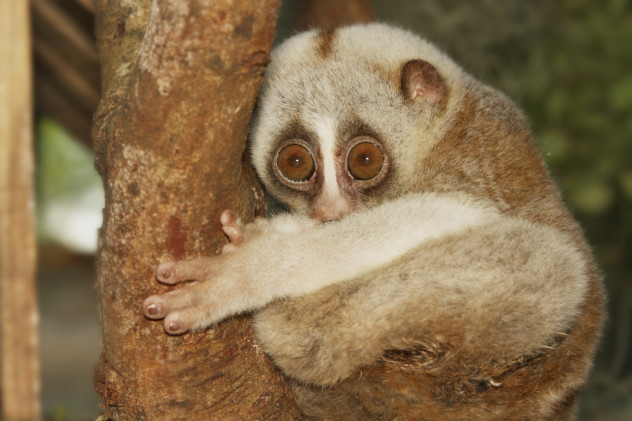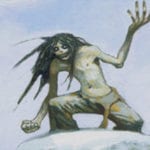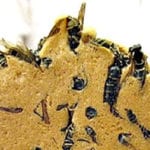 Misconceptions
Misconceptions  Misconceptions
Misconceptions  History
History 10 Amazing Roman Epitaphs
 Weird Stuff
Weird Stuff 10 Niche Subcultures That Are More Popular Than You Might Think
 Mysteries
Mysteries 10 Tragic Disappearances and Deaths in Joshua Tree National Park
 History
History 10 Ways Childhood Really Sucked in the Old West
 Music
Music 10 Name Origins of Famous Bands from the 1990s
 Religion
Religion 10 Biggest Turnarounds by the Catholic Church
 Weird Stuff
Weird Stuff 10 Unbelievable Times Laws Had Unintended Consequences
 Humans
Humans Ten Historic Women Who Deserve Way More Credit Than They Got
 Movies and TV
Movies and TV 10 Films That Spawned Major Lawsuits
 Misconceptions
Misconceptions 10 Phony Myths and Urban Legends That Just Won’t Die
 History
History 10 Amazing Roman Epitaphs
 Weird Stuff
Weird Stuff 10 Niche Subcultures That Are More Popular Than You Might Think
Who's Behind Listverse?

Jamie Frater
Head Editor
Jamie founded Listverse due to an insatiable desire to share fascinating, obscure, and bizarre facts. He has been a guest speaker on numerous national radio and television stations and is a five time published author.
More About Us Mysteries
Mysteries 10 Tragic Disappearances and Deaths in Joshua Tree National Park
 History
History 10 Ways Childhood Really Sucked in the Old West
 Music
Music 10 Name Origins of Famous Bands from the 1990s
 Religion
Religion 10 Biggest Turnarounds by the Catholic Church
 Weird Stuff
Weird Stuff 10 Unbelievable Times Laws Had Unintended Consequences
 Humans
Humans Ten Historic Women Who Deserve Way More Credit Than They Got
 Movies and TV
Movies and TV 10 Films That Spawned Major Lawsuits
10 Amazing Ways Tree-Dwelling Animals Fool Predators
Nature is a savage world, full of vicious predators eager to feed on defenseless little creatures. To avoid ending up as a meal, some animals evolve to fight, some evolve to flee . . . and some evolve to act.
10The One-Bird Army
A tiny Australian bird, the brown thornbill understands the strategic power of lying. Whenever a predator bird threatens its nest, the thornbill creates an incredible auditory illusion, mimicking real alarm calls of several other bird species. Specifically, it uses alarm calls warning of a hawk approaching, which is usually more than enough to scare the smaller predator off.
And the thornbill is a talented mimic, capable of reproducing the fearful cries of up to four different species. The strategy appears to be extremely effective. To test it, researchers recently played recordings of a thornbill mimicking distress calls to pied currawongs, a species that loves to prey on thornbill chicks. In response, the currawongs all became defensive, with some looking up at the sky for a hawk while others immediately left the area. That success rate was exceptionally impressive since one of the bird species regularly imitated by the thornbill is the pied currawong itself.
9The Jumping Spider Mimics Ants
Spiders may be excellent predators, but even they tend to skedaddle when an army of ants is afoot. Well, most spiders do, anyway. A few species actually love hanging around ants and have evolved to look just like them to avoid detection. In fact, their ant-like disguises are so good that other spiders actually run from them, assuming that a vicious insect swarm can’t be far away. But jumping spiders play an even more complex game of deception. They don’t look remotely like an ant, and yet real ants leave them alone.
Green tree ants are an aggressive species that can have up to 500,000 workers in colonies covering as many as 12 trees. Other species usually avoid these trees due to the ants’ forceful territorial behavior. Yet the jumping spider Cosmophasis bitaeniata can go into the nests of these ants without being harmed. The secret lies in chemical mimicry—the spider smells like a green ant and the ants themselves have such bad eyesight they can’t tell the difference. This smelly disguise allows the spider to leisurely make its way to the colony’s nursery, where it uses ant larvae for food and to update its scent. Jumping spiders also leave their own eggs in the nursery, ensuring that baby spiders will have a snack to hand when they hatch.
8And A Moth Mimics Jumping Spiders
But if you’re thinking that the spiders are the kings of the mimic world, think again. Jumping spiders may pretend to be ants, but there is a species that pretends to be a jumping spider. And they do it so well that jumping spiders sometimes get territorial with the “intruder spider” or run away instead of hunting them.
In the forests of Costa Rica, researchers first noticed the mimicry when disturbed metalmark moths, so named for their iridescent wing markings, started behaving in an odd way. When threatened, the moths splayed their back wings, held their forewings above their body at an angle, and then started to hop around, not an aerobic activity most moths are known for. Taken together, the pose and hopping motion make for a bizarrely convincing impression of a jumping spider, which tend to move with similar short jerks.
When the deception works, the spider wastes time working out whether it just encountered lunch or cousin Larry, giving the moth critical seconds to make an escape. The metalmark moth is normally among the spider’s natural prey, but due to its amazing acting skills, it doesn’t always make for an easy meal.
7The Fossil Fly Mistaken For A Leaf

Mimicry in the animal kingdom goes back millions of years. One example of this is an extinct species of hangingfly, which apparently spent much of its time pretending to be a leaf on an also extinct species of tree. In fact, its camouflage was so good that when the 165-million-year-old insect was discovered, scientists genuinely mistook it for a fossilized leaf.
The hangingfly certainly needed all the protection it could get—with its weak wings and legs, it stood no chance of fighting off predators or flying to safety. The camouflage possibly also helped the hangingfly, scientifically dubbed J. ginkgofolia, to ambush its own prey, which would have been other insects.
Nearly all finds of insect mimicry in the fossil record involve flowering plants, but the hangingfly evolved alongside a ginkgo-type tree. That’s historic, since, while flowering finds go back almost 100 million years, the hangingfly fossil shows that creatures already superbly faked their identities 40 million years before flowering plants even appeared. Sadly, J. ginkgofolia most likely died out when the tree species it evolved to resemble went extinct during the dinosaur era.
6Nature’s Creepiest Caterpillar
One creature that goes all Halloween on its predators is the caterpillar stage of the imperial fruit sucking moth. To survive in the dangerous Australian rainforest, the caterpillar hides its helplessness behind a seriously disturbing mask.
When in danger, the caterpillar will rear like a snake while bending its head, almost as though in prayer. This allows its skin to expand forward and down, revealing colors that include yellow, white, and black. Together, they form a skull-like face. Two lines of human-looking teeth sit between a mean pair of “eyes,” which themselves resemble hollow sockets. The combination of that freaky face and a body that can grow up to 12 centimeters (5 in) in length and snaps up like a snake is enough to make any predator hesitate.
Once it morphs into its final form, the moth goes for the more traditional camouflage of insects, blending into trees and bark while looking like an unappetizing leaf. Sadly, its camouflage abilities have been no protection against habitat loss, which now endangers the entire species.
5Gecko Spine Amputation
It’s common knowledge that some lizards lose their tails when frightened. But few understand the gruesome mechanics behind the wriggly decoy that has saved many a gecko’s life. Nowhere in the animal kingdom will you find another animal that uses this escape strategy—and probably with good reason. For the gecko to lose its tail it needs to break its own spine, something that spells lifelong paralysis or death for others.
When a tree-clinging tokay gecko feels trapped, muscle contractions literally break its vertebra in half and the tail falls off, mesmerizing predatory eyes long enough for the gecko to hightail it somewhere safer. And the discarded appendage is practically a professional actor in its own right, jumping up to 3 centimeters (1.2 in) in the air and continuing to flex in complex patterns for up to half an hour. The tokay gets a new tail after about three weeks (six to eight weeks for other gecko species) but the replacement is never quite the same as the original, usually being shorter and acting less dramatically when cast off again.
Researchers now believe that the tail’s movements could be controlled by neurons, which normally shouldn’t be able to function without messages from the brain. Somehow, gecko neurons never got that memo. If scientists can crack just how that works, it could have important implications for treating human spinal cord injuries.
4Kiss Squeaks
In Borneo, isolated groups of orangutans deploy a smooching strategy when predators approach. When a snake, big cat, or human is spotted, the hairy red apes start kissing their own fingers, lips, or leaves. Called “kiss squeaks,” the resulting sounds let the hunter know it’s been spotted—and possibly fib about the orangutan’s size.
Normally, the deeper an animal’s voice, the bigger it is. Kiss squeaks made with lips or fingers are not really that low, but when the apes suck face with leaves, the tone drops to a deep-sounding smack. Since the apes are difficult to spot in the trees, all a predator has to go by are noise clues. And if the target sounds big and already aware of the predator, it’s likely to lose interest and go stalk another, smaller target.
Interestingly, holding leaves to their mouths to lower their frequency is not an instinctive behavior, as not all orangutans display it. Instead, it appears to be something learned socially in a particular group or area.
3The Falling Leaf Lizard
Another species from Borneo that uses trickery to survive is the flying dragon. This tiny lizard gets around by gliding from tree to tree using membranes attached to its limbs, much like a flying squirrel. Like many species, they also pretend to be leaves—but the dragon pretends in an extraordinarily unorthodox way.
The little lizards don’t sit motionless, hoping to blend into the foliage. Rather, when they move to another tree, they fall like leaves, presumably to avoid the interest of any swooping birds. To heighten the ruse, the dragons have also perfected their colors. Not only do they resemble the shade of falling, expired leaves rather than those still growing on the tree, but their body colors differ depending on their habitat. Dragons living in the coastal mangrove swamps resemble the red leaves discarded by the local trees. Meanwhile, dragons living in the lowland rainforests are greener in color.
So how effective is the dragon’s ruse? Scientists weren’t sure, since birds can perceive ultraviolet light, which humans and other mammals can’t. However, a 2014 study found that local birds apparently couldn’t distinguish between a flying dragon and a dead leaf, providing the lizard remained in its color-based habitat.
2Birds Pretending To Be Caterpillars
The cinereous mourner, a small bird native to the Amazon rain forest, hatches chicks with remarkable acting skills. To avoid being eaten, the chicks have adopted the appearance of a local toxic caterpillar, which is obvously left alone by predators. The real caterpillar, from the family Magalopygiday, is bright orange, as hairy as an ’80s rock group, and around 12 centimeters (5 in) long.
Naturally, that’s not a species many predators want to mess with. So, when their nest is disturbed, the baby birds immediately break out their best caterpillar impression. Dropping their heads and hiding their faces, the chicks start slithering and wriggling, with the mass of agitated orange telling monkeys and snakes that they’re looking at a poisonous caterpillar. Mourner chicks are so committed to this act that they will only look up again when their parent gives a special call.
Baby mourners are not fed as often as chicks from other bird species and consequently develop slower, remaining in the nest for around three weeks. Having such a super disguise is not only clever, but absolutely crucial to survive their long, vulnerable nesting period.
1Primates Pretending To Be Snakes

It’s almost unheard of for a primate to pretend to be a different animal, much less a reptile. But in Southeast Asia, the slow loris manages to pull it off bizarrely well.
The adorable loris looks more like an item in the soft toys section than the only primate in existence with a toxic bite. On top of that, it has snake-like markings, makes sinuous movements, and hisses when in danger. As a result, experts are starting to believe that the loris evolved to mimic the speckled cobra when ancient climate change replaced the Malay Peninsula’s safer tropical forests with more open woodland.
The adorable loris is nocturnal, which helps with the cobra act, since predators can be more easily fooled in the dark. During the actual snake act, the loris will raise its arms over its head to form a cobra-like hood. It will also produce a sound exactly like a furious cobra, while an extra vertebra in their spine allows for some snaky body weaving. Nobody is really sure why these primates alone became toxic, but it sure fits with their chosen alter ego.








